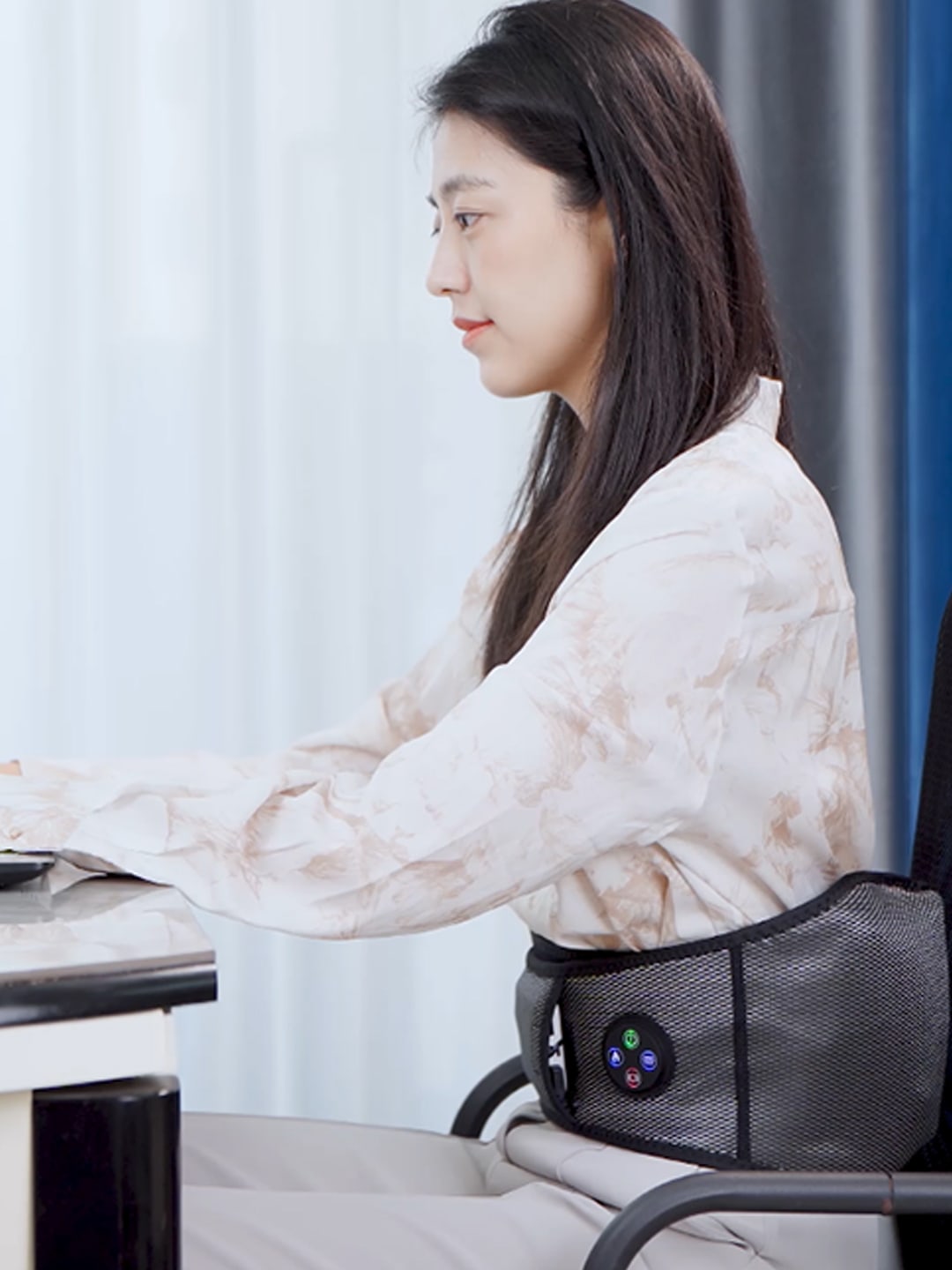- By Grace
- Updated on
Living with lower back pain can be truly challenging, impacting everything from daily chores to your overall quality of life. Many individuals, particularly those in their middle or later years, search for accessible solutions and often wonder: is a massager machine for back pain a worthwhile investment? These devices come in various forms, all promising to soothe aching muscles and provide relief. But how effective are they really, especially when it comes to persistent discomfort? This article will delve into how these machines work, what science says about their benefits, their limitations, and what you should consider before choosing one as a back pain management device.
Understanding the nuances of these devices is key. While some users report significant comfort, others find the relief to be fleeting. We aim to provide a balanced view, helping you make an informed decision about whether a machine for back pain could be a helpful addition to your wellness toolkit. It's not just about the machine itself, but how it fits into a broader strategy for managing your back health.
Understanding Lower Back Pain in Middle-Aged and Elderly Individuals
Lower back pain is a common companion for many as they age. For middle-aged and elderly individuals, the causes can be varied and often multifaceted. Degenerative changes in the spine, such as osteoarthritis or spinal stenosis, can lead to chronic aches. Years of wear and tear, coupled with decreased muscle tone or a more sedentary lifestyle, can make the back more susceptible to strains and sprains. Conditions like osteoporosis can also weaken vertebrae, increasing the risk of pain and injury. It's not uncommon for pain to stem from a combination of these factors, making everyday activities a struggle and significantly impacting one's sense of well-being. Have you ever felt that nagging ache turn a good day into a difficult one?
The impact of this chronic pain extends beyond physical discomfort. It can limit mobility, affect sleep, and even lead to feelings of frustration or isolation. The body's natural response to persistent pain can sometimes involve muscle guarding, where muscles around the painful area tense up to protect it, paradoxically leading to more stiffness and discomfort. Understanding these underlying aspects is crucial when considering any form of treatment, including the use of a massager for back pain. The goal is often to break this cycle of pain and tension, and that's where such devices might play a role.
- Common causes: Degenerative disc disease, arthritis, muscle deconditioning.
- Contributing factors: Past injuries, poor posture over time, reduced flexibility.
- Impact: Reduced mobility, sleep disturbances, decreased participation in enjoyable activities.

The Science Behind How a Massager Machine for Back Pain Works
So, how does a massager machine for back pain actually attempt to provide relief? The mechanisms are generally based on the principles of manual massage. One primary effect is the promotion of blood flow to the targeted area. The mechanical action of the massager can stimulate circulation, a process known as vasodilation, which brings more oxygen and nutrients to the tissues and helps carry away metabolic waste products. This improved circulation can aid in tissue repair and reduce soreness. Think of it as gently encouraging your body’s natural healing processes.
Beyond circulation, these devices aim for muscle relaxation. The rhythmic pressure and movement can help to decrease muscle tension, alleviate spasms, and reduce stiffness. Some more advanced machines incorporate features like heat, which further enhances muscle relaxation and can be very soothing. Others might use vibration or even gentle squeezing actions, which some users find particularly effective for overall muscle comfort. There's also the gate control theory of pain: the idea that non-painful stimuli (like massage) can "close the gate" to painful stimuli by overriding the nerve signals sent to the brain. Furthermore, massage can stimulate the release of endorphins, the body's natural pain-relieving chemicals, contributing to a sense of well-being. This is where a quality therapeutic machine for back aims to make a difference.
- Increased Blood Flow: Delivers oxygen and nutrients, removes waste.
- Muscle Relaxation: Reduces tension, spasms, and stiffness.
- Endorphin Release: Natural pain-relieving chemicals.
- Gate Control Theory: Massage sensations can interrupt pain signals to the brain.
- Heat Therapy: Often combined to deepen muscle relaxation and soothe aches.
The Real-World Effectiveness: Benefits and Limitations of a Back Pain Relief Machine
When considering a back pain relief machine, it's essential to have realistic expectations. Many users experience positive, albeit sometimes temporary, benefits. One of the most significant advantages is convenience; having a device at home allows for immediate access to relief whenever needed, without the time or expense of regular professional appointments. For acute muscle soreness or stiffness from overexertion, a massager machine for back pain can provide noticeable comfort and help speed up recovery. It can be a really, really useful tool for day-to-day muscle management for some individuals.
However, there are limitations to acknowledge. As some critics and users note, for chronic, deep-seated lower back pain, a massage machine often provides temporary relief rather than a long-term cure (Perspective 1). It may soothe the muscles, but it typically doesn't address underlying structural problems like a herniated disc or severe arthritis. The effectiveness can also vary greatly from person to person and depends on the type and severity of the pain. Furthermore, the cost of some higher-end machines can be substantial, leading to questions about whether the short-term benefits justify the expense, especially when compared to the cost of a single manual therapy session (Perspective 3). It’s often best viewed as a supplementary treatment, part of a broader pain management strategy that might include exercise, stretching, and professional medical advice.
- Benefits:
- Convenience and immediate accessibility at home.
- Temporary relief from muscle stiffness and soreness.
- Can aid muscle relaxation and improve localized circulation.
- May reduce the need for pain medication for mild, muscular pain.
- Useful as a supplementary tool in a comprehensive pain management plan.
- Limitations:
- Often provides temporary, not curative, relief for chronic conditions.
- Does not typically address underlying structural causes of pain.
- Effectiveness varies significantly among individuals and machine types.
- Higher-end models can be expensive, and cost-effectiveness is a valid concern for some.
- Not a replacement for medical diagnosis or treatment for serious back conditions.

Exploring Types of Therapeutic Machines for Back Pain
The market offers a diverse array of therapeutic machine for back pain options, each employing different mechanisms to target discomfort. Understanding these types can help you consider what might suit your needs best. Vibrating massagers are often entry-level and provide a general, surface-level soothing effect. Shiatsu massagers aim to mimic the deep, kneading circular motions of a traditional shiatsu massage, using rotating nodes to work on muscle knots and tension. These can be quite intense for some, especially older adults or those new to massage.
Percussion massagers, also known as massage guns, deliver rapid, concentrated pulses deep into the muscle tissue. While effective for breaking up adhesions and for athletes, they might be too aggressive for general lower back pain in some individuals. Then there are massage cushions and chairs, which offer broader coverage, often combining various techniques like rolling, kneading, and vibration for the entire back. Many modern devices, as highlighted by some users (Perspective 2), combine functions such as heating elements, air compression (squeezing), red light therapy, and vibration modes. These multi-functional units aim to provide a more comprehensive relaxation experience, with heat helping to loosen muscles before the mechanical massage begins. The choice often comes down to the specific type of relief sought and personal preference.
- Vibrating Massagers: Gentle, surface-level relief.
- Shiatsu Massagers: Deep kneading, mimics finger pressure.
- Percussion Massagers (Massage Guns): Intense, deep-tissue pulses.
- Massage Cushions/Chairs: Full-back coverage, often multi-functional.
- Heat Therapy Massagers: Combine massage with warmth for enhanced relaxation.
- Inflatable/Squeezing Massagers: Provide gentle traction or compression.
- Combination Function Machines: Integrate heating, squeezing, red light, and vibration for a synergistic effect.
Tips for Effectively Using a Massager for Back Pain and Managing Expectations
To get the most out of a massager for back pain, and to use it safely, it’s wise to follow some practical guidelines, especially for middle-aged and elderly users who might have more sensitive conditions. Always start slowly and gently. You can gradually increase the intensity or duration as your body gets accustomed to it. It’s crucial to listen to your body; if the massage causes increased pain or discomfort, stop using it immediately. What feels good for one person might be too intense for another.
Consistency can be key for reaping potential benefits, but it's important not to expect a machine for back pain to be a miracle cure, particularly for chronic or severe issues. These devices are often best used as part of a holistic approach to back health. This includes regular gentle exercise (like walking or swimming), stretching to maintain flexibility, practicing good posture, and ensuring your workspace and home environment are ergonomically sound. When considering a purchase, reflect on the cost-benefit (Perspective 3). Sometimes a simpler, less expensive model can provide adequate relief for your specific needs without the high price tag of a feature-laden device. And most importantly, if your back pain is severe, persistent, worsens, or is accompanied by other symptoms like numbness or weakness, always consult your doctor or a physical therapist for a proper diagnosis and treatment plan before relying solely on a back pain management device.
- Start with short sessions and low intensity, gradually increasing if comfortable.
- Never use a massager directly over bones, inflamed areas, or open wounds.
- If pain worsens, discontinue use and consult a healthcare professional.
- Combine use with other healthy habits: gentle exercise, stretching, good posture.
- Consider the cost versus the specific benefits you seek; a high price doesn't always equal better results for *your* needs.
- Always prioritize professional medical advice for persistent or severe pain.
Conclusion: A Tool for Comfort, Not a Universal Cure
So, can a massager machine for back pain be effective? The answer is nuanced: yes, it can be a valuable tool for many, especially middle-aged and elderly individuals seeking accessible comfort from muscle aches and stiffness. These devices can offer temporary relief, promote relaxation, and improve localized blood flow. They work by easing muscle tension and can be a pleasant way to unwind after a long day or to soothe tired back muscles.
However, it's crucial to understand that a massager for back pain is generally not a standalone cure for chronic or severe lower back conditions. Its effectiveness is often as a supplementary aid within a broader wellness strategy. By understanding the different types of machines, their mechanisms, and their limitations, and by integrating their use with other healthy practices and professional guidance when needed, you can make an informed choice. Ultimately, a back pain relief machine might be a helpful ally in your journey towards better back health and a more comfortable life, but managing expectations is key to satisfaction.





